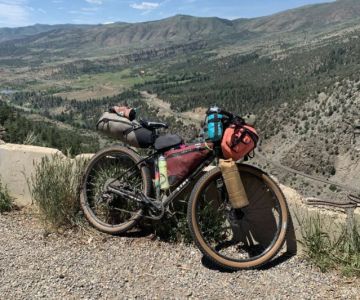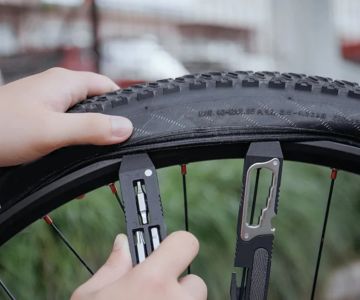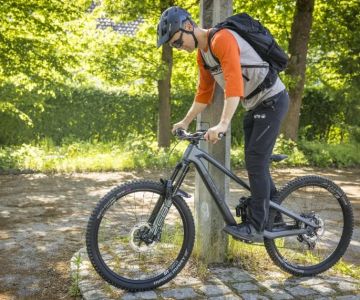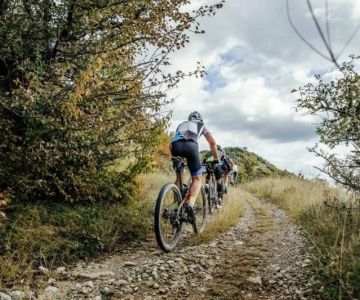- 1-Introduction to Multi-State Bicycle Tours
- 2-Preparing for Your Bicycle Tour
- 3-Choosing Safe Routes for Your Cycling Trip
- 4-Essential Gear for a Multi-State Bicycle Tour
- 5-Tips for Staying Safe During Your Tour
- 6-Conclusion
How to Plan a Safe Bicycle Tour Across Multiple States
Trending Blog Articles
Popular Blog Posts
 Best GPS Bike Computers: Top Models, Features, and Price Comparison
Best GPS Bike Computers: Top Models, Features, and Price ComparisonDiscover the best GPS bike computers for accuracy, features, and price. Our expert reviews will help you find the ideal bike GPS for your needs. Compare the top models now!
 How to Pack Minimalist Gear for a 3-Day Bikepacking Trip
How to Pack Minimalist Gear for a 3-Day Bikepacking TripLearn how to pack minimalist gear for a 3-day bikepacking trip, with expert tips on the essential gear, packing techniques, and recommended products to make your adventure smoother.
 Best Bike Tire Levers for Quick Fixes
Best Bike Tire Levers for Quick Fixes"Discover the best bike tire levers for quick and easy tire repairs. Find top picks for efficient, durable, and reliable tire levers perfect for every cyclist."
 How to Adjust Suspension Fork Pressure Correctly for Optimal Ride Quality
How to Adjust Suspension Fork Pressure Correctly for Optimal Ride QualityLearn how to adjust suspension fork pressure correctly to enhance your ride quality. Our guide will help you understand the process, tools, and tips for optimal suspension fork setup.
 How to Ride Efficiently in Rolling Hills Terrain: Tips and Techniques
How to Ride Efficiently in Rolling Hills Terrain: Tips and TechniquesLearn how to ride efficiently in rolling hills terrain with expert cycling tips, techniques, and gear recommendations for smooth and enjoyable rides.
 How to Ride Through Wildlife Areas Safely: Essential Tips for Cyclists
How to Ride Through Wildlife Areas Safely: Essential Tips for CyclistsLearn how to ride safely through wildlife areas with our expert tips. Understand how to protect yourself, avoid wildlife encounters, and ensure your cycling adventures are safe and enjoyable.
Categories
Top Visited Sites
 Trek Bicycle Allentown4.0 (553 reviews)
Trek Bicycle Allentown4.0 (553 reviews) Leo's Mobile Bicycle Service5.0 (70 reviews)
Leo's Mobile Bicycle Service5.0 (70 reviews) Foxboro Bike4.0 (230 reviews)
Foxboro Bike4.0 (230 reviews) Epic Ride Shop4.0 (155 reviews)
Epic Ride Shop4.0 (155 reviews) Fly E-Bike West Harlem4.0 (67 reviews)
Fly E-Bike West Harlem4.0 (67 reviews) Stage 2 Cyclery4.0 (42 reviews)
Stage 2 Cyclery4.0 (42 reviews)Must-Read Guides Posts
Top Searches
Trending Guides Posts
 How to Teach Kids to Ride a Bike: A Step-by-Step Guide for Parents
How to Teach Kids to Ride a Bike: A Step-by-Step Guide for Parents Tips for Riding on Busy City Streets: Smart Strategies for Urban Cyclists
Tips for Riding on Busy City Streets: Smart Strategies for Urban Cyclists Best US National Parks for Mountain Biking: Ride Epic Trails Across America
Best US National Parks for Mountain Biking: Ride Epic Trails Across America Best Aero Helmets for Time Trials and Racing
Best Aero Helmets for Time Trials and Racing How to Clean and Lubricate Your Bike Chain Like a Pro
How to Clean and Lubricate Your Bike Chain Like a Pro 10 Must-Have Items for Long-Distance Cycling Trips
10 Must-Have Items for Long-Distance Cycling Trips 